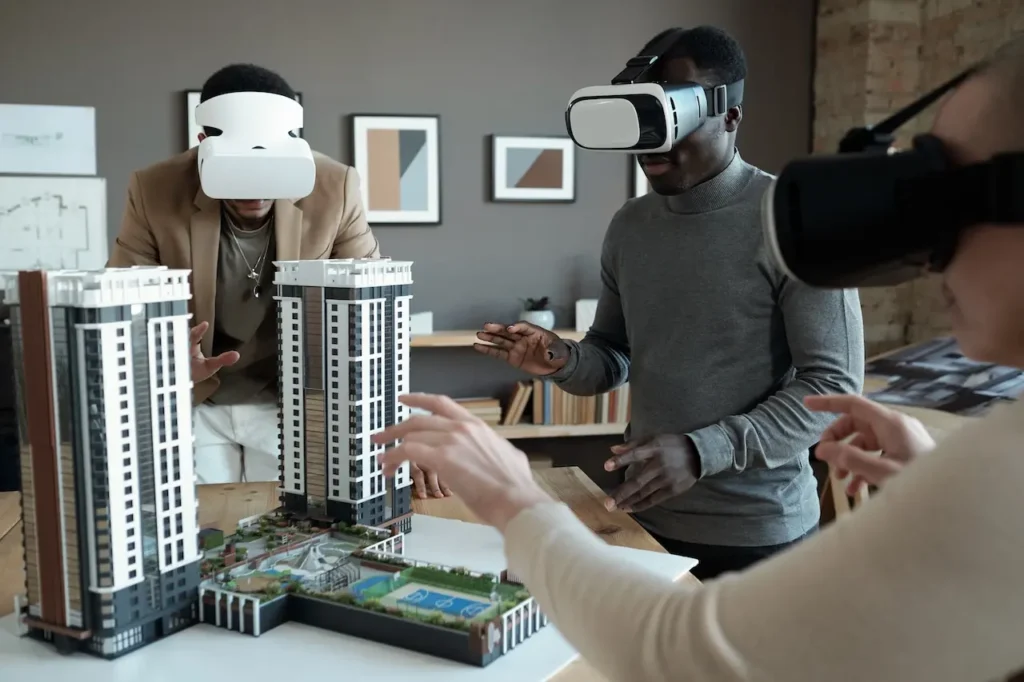Architects are the visionaries and craftsmen behind the physical spaces that define our daily lives. Their work, an intricate blend of art, science, and technology, does more than just fill our world with structures; it shapes the environment we live in, influences our interactions, and mirrors the societal shifts across the ages.
This blog post delves into architects’ multifaceted roles, exploring their historical roots, educational journeys, influence on culture, commitment to sustainability, the embrace of technology, interdisciplinary collaboration, problem-solving prowess, cultural sensitivity, psychological impact, and contributions to architectural movements.
Historical Foundations and Educational Rigor
The term “architect” traces back to the Greek words “archi” (chief) and “tekton” (builder), highlighting the role’s historical significance as master builders.

Becoming an architect requires a rigorous educational path, requiring a professional degree, extensive internships, and passing challenging licensure exams. The image above is just an example of some classed required to obtain a Bachelor of Science in Architecture.
This journey ensures that architects are well-prepared to undertake their critical role in society, designing aesthetically pleasing but also safe, functional, and sustainable spaces.
Architects as Cultural Icons
Renowned architects like Frank Lloyd Wright, Zaha Hadid, and Le Corbusier have not only influenced the field of architecture but have also left an indelible mark on culture and art.

Their groundbreaking designs and philosophical approaches to space have shaped how we think about and interact with our environments, proving that architecture transcends its primary function to become a cultural expression.
Embracing Sustainability
In response to the pressing environmental challenges of our time, modern architecture has seen a significant shift towards sustainability. Architects are now focusing on minimizing the ecological footprint of buildings by utilizing eco-friendly materials, maximizing energy efficiency, and integrating nature into urban spaces.
This sustainable approach underscores the profession’s adaptability and pivotal role in guiding society towards a more environmentally conscious future.
The Technological Transformation
The advent of computer-aided design (CAD), 3D printing, and virtual reality has revolutionized the architectural field.

These technologies have enhanced design precision, allowed for innovative construction methods, and provided immersive experiences that were previously unimaginable. This technological leap streamlines the design process and opens up new avenues for creativity and experimentation.
Collaborative Synergy
Architecture is inherently interdisciplinary, requiring close collaboration with engineers, interior designers, urban planners, and landscape architects. This collective approach ensures that buildings are visually compelling but also practical, secure, and well-integrated into their surroundings, demonstrating the importance of synergy in creating comprehensive and cohesive spaces.
Problem-Solving and Psychological Considerations
Architects are adept at navigating complex challenges such as optimizing space, enhancing energy efficiency, and ensuring accessibility. Their designs significantly impact occupants’ well-being, productivity, and comfort, highlighting the profound psychological effects of architectural choices. By addressing these multifaceted considerations, architects underscore their role as innovative problem solvers and caretakers of human experience.
Cultural Sensitivity and Architectural Movements
In designing spaces, architects must be attuned to their intended users’ cultural values and practices, especially in public and community-centric projects.

This sensitivity enriches the architectural landscape, making it more inclusive and reflective of diverse identities. Furthermore, the evolution of architectural styles—from Gothic and Renaissance to Modernism and Postmodernism—mirrors the dynamic interplay between architecture and societal changes, offering insights into design’s historical and cultural contexts.
Conclusion
Architects are much more than the designers of our physical world; they are the visionaries who influence how we live, work, and interact. Through their commitment to sustainability, technological innovation, interdisciplinary collaboration, and cultural sensitivity, architects play a crucial role in advancing societal well-being and environmental stewardship.
As we look toward the future, the architectural profession continues to evolve, promising to shape our environment in sustainable, inclusive, and inspiring ways.


